Boat Bike Tours: A review of “Hansa Highlights”
One of the first people I met on my recent week-long trip with Boat Bike Tours was a retired Canadian man named Peter, who told me right off the bat that this was his third tour with the company. I took that as a good sign.
Disclosure: This is a sponsored post in that I received the trip and the bike rental for free from Boat Bike Tours in exchange for writing this review. Nevertheless, Boat Bike Tours had no influence over what I’ve written; all opinions are my own.
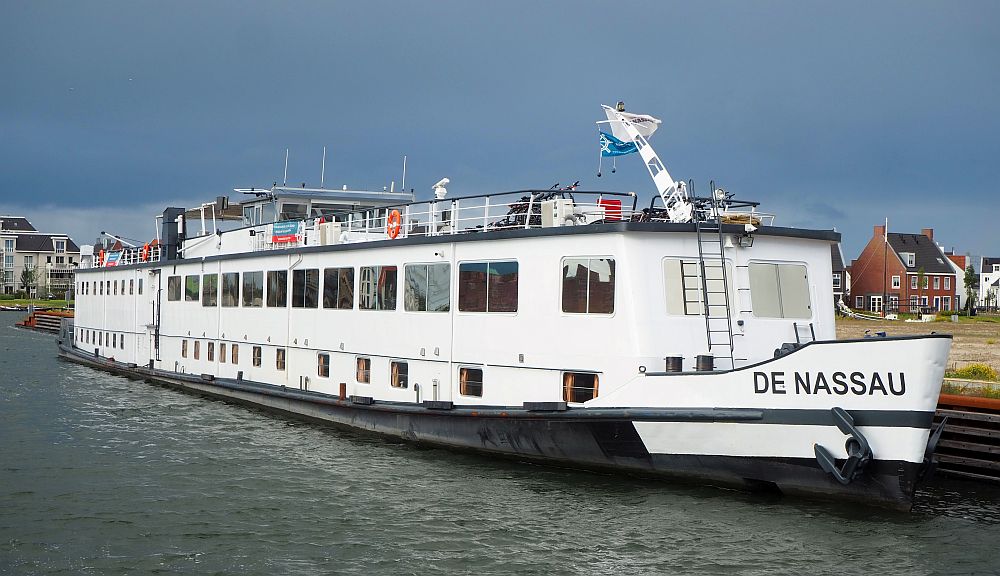
Another disclosure: This article contains affiliate links. If you click on one of them and make a purchase, I’ll receive a small commission. This will not affect your price.
Along with my friend and fellow blogger, Shobha George of Just Go Places, I had agreed to this one-week trip with a bit of trepidation. I’m not at all physically fit, and the bicycling distances of about 45 kilometers per day sounded very long to me. Meeting Peter, this enthusiast who was over 70 years old, made me think that it couldn’t be too grueling.
I was only partially right. The rides weren’t grueling, but I used an e-bike, and I didn’t cycle every day of the trip. Peter and his son, who was traveling with him, cycled every day except one and used plain old bikes without motors.
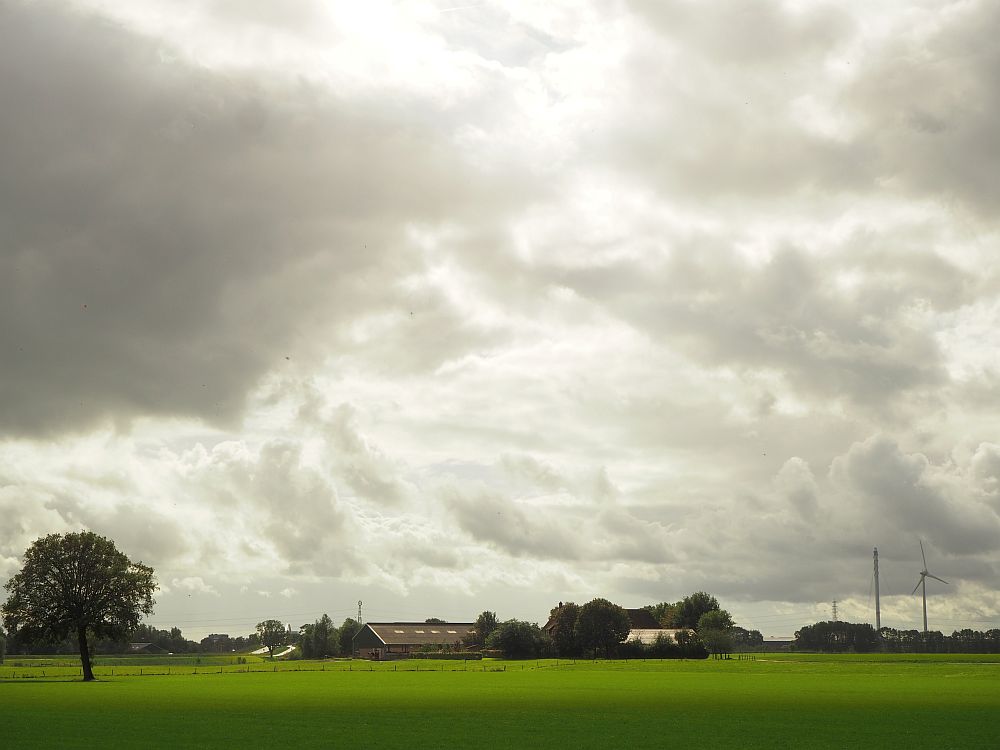
Hanseatic cities tour
Boat Bike Tours runs a number of different tours covering different sights and routes. The one I took is called “Hansa Highlights.” The route starts and ends in Amsterdam, traveling in a circle around the center of the Netherlands through a number of Hanseatic cities and towns.
The Hanseatic League
The Hanseatic League, according to Wikipedia, was a “commercial and defensive confederation of merchant guilds and market towns” in the Middle Ages, originating in northern Germany. The cities and towns that were part of the Hanseatic League were scattered all over Northern Europe in Germany, the Baltic, the Netherlands and a few parts of Scandinavia.
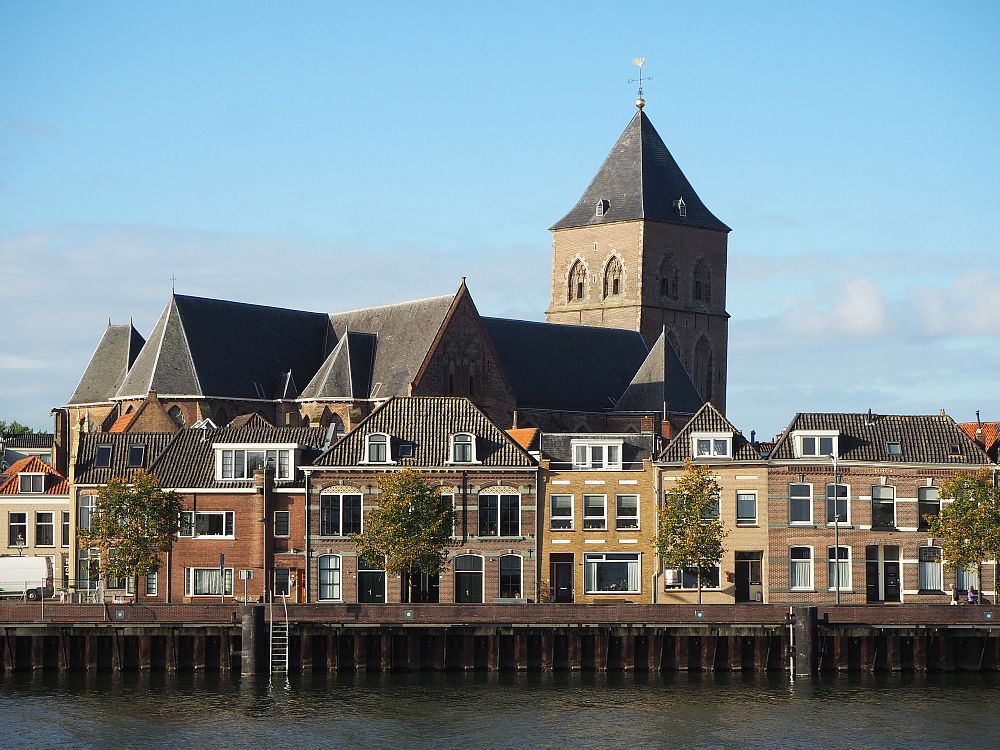
As part of the Hanseatic League, cities and towns grew prosperous through cooperating, expanding and protecting their own and each other’s shipping and trade. The Hanseatic merchants established settlements in many of these towns, often living in their own communities rather than integrating into local society.
The Hanseatic cities traded in all sorts of goods: grain, cloth, and, here in the Netherlands, fish, especially eels and herring.
Our Hanseatic cities tour
On our trip, we passed through nine different cities and towns that took part in the Hanseatic trade, if I counted correctly: Arnhem, Doesburg, Zutphen, Deventer, Hattem, Zwolle, Kampen, Elburg, and Harderwijk. Of this list, only Deventer and Kampen were fully-fledged Hanseatic cities (as was the town where I live, Groningen). The rest were just trading centers with a Hanseatic League presence in the form of a Hansa merchant community.
You might enjoy reading about these other Hanseatic cities:
- A maritime-themed weekend in Hamburg
- Rynek Underground Museum at Krakow Main Square
- A weekend in Bremen
The draw of these towns today, though, is their beauty. Not all of them, mind you; Arnhem, for example, was largely destroyed in World War II, but is nevertheless worth visiting because of the dramatic battle that happened there in the war.
Many, though, have largely intact town cores of charming medieval-era houses and churches. I particularly enjoyed Hattem, Doesburg and Deventer for their beautiful streets and Harderwijk for its picturesque Vischmarkt, a town square, and its small harbor with traditional wooden fishing boats.
Water control and land reclamation
While it isn’t stated in the title of this particular tour, the route also covers a lot of history regarding Holland’s historical tendency to create new land whenever it is needed. I wrote about this many years ago as “Watery hubris.”

Holland has been reclaiming land from the sea for centuries using dikes and pumps powered by windmills. Many of the towns we bicycled through or docked in on this trip used to be fishing harbor towns. That’s because they were on or near what used to be called the Zuiderzee, which means “southern sea” and was essentially the southern end of the North Sea.
The Zuiderzee doesn’t exist anymore. Back in the 1930s a huge dike was built across its mouth, turning the Zuiderzee into a freshwater lake, the Ijsselmeer, or Ijssel Lake. (The Ijssel is the river that feeds into it.)
While fishing boats could and still can leave the Ijsselmeer to the North Sea, the loss of the Zuiderzee was a heavy blow for the fishing industry. Ships no longer took their catch to these towns; the competition was too fierce from other ports.

The final death knell for these fishing towns was the building of a whole new province, called Flevoland, on land reclaimed from the Ijsselmeer. Between this huge piece of new land and what used to be the coastline of the Zuiderzee is a long, narrow lake, seeming more river-like than lake-like, called the Veluwemeer. Our route back toward Amsterdam was along this body of water.
Nowadays the fishing history of the towns we passed through is evidenced more in tradition than current fact. Several towns, particularly Harderwijk and Spakenburg (not a Hanseatic town), have a historical harbor with a picturesque collection of botters, a small, rounded sort of traditional wooden sailboat used for fishing.
Boat Bike Tour: Hansa Highlights
The routes for the Boat Bike Tours have clearly been carefully chosen. Much of the ride each day goes through flat green countryside with fields of crops, grazing cows or sheep, lakes, dikes, and scattered farmhouses. Often we rode along the tops of dikes which means a) big views and sometimes b) more exposure to the wind. Even coming into Amsterdam we rode almost the whole way in green spaces.
In order to do this, the route each day isn’t direct from point A, where guests get off the boat, to point B, where they board again. It meanders quite a bit to catch the best scenery. It would be a distinctly shorter, but often less scenic ride if you took the most direct route.

In other words, the highlight of Hansa Highlights is the countryside.
Nevertheless, being the city person that I am, I particularly enjoyed some of the towns we passed through:
Arnhem
Arnhem is well-known for its World War II history. The battle portrayed in the movie “A Bridge Too Far” happened here. Not much of the old town remained after the war, but the cathedral and its tower have been rebuilt. The tower has an elevator, and a trip to the top is well worth doing. From there you can admire a view over the city and river, including the famous bridge. Informational panels point out landmarks from the Battle of Arnhem.
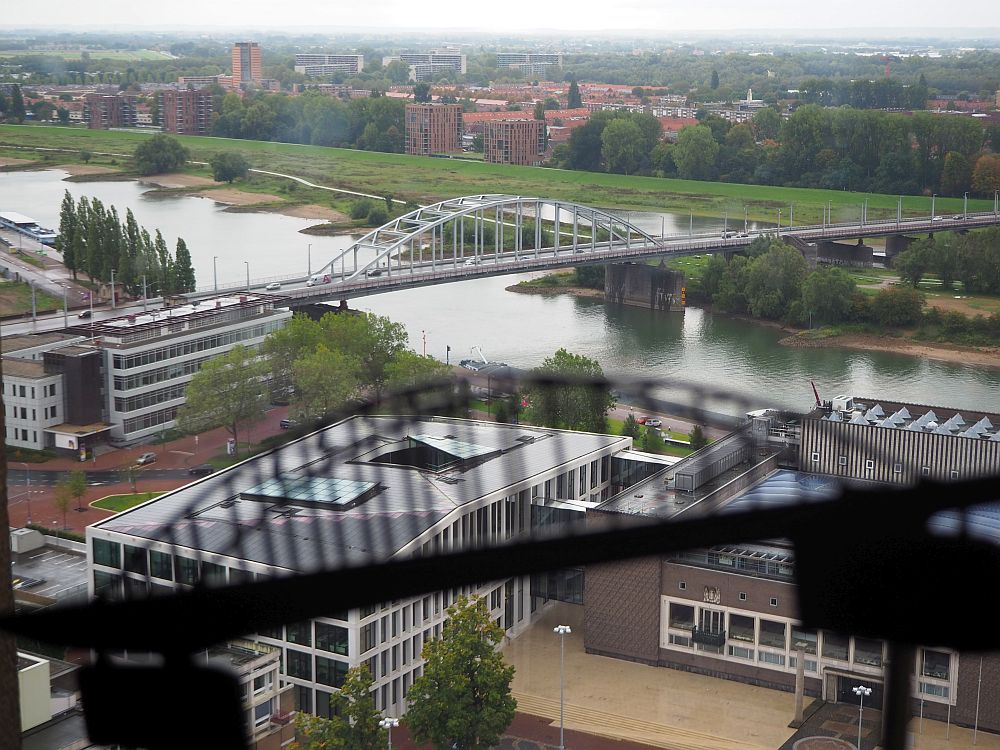
Also in Arnhem is a museum dedicated to the battle, called the Airborne Museum. It’s a bit outside the center and I didn’t manage to visit it. I did visit its extension, the Airborne at the Bridge museum, which honors the British who gave their lives in this battle.
Another place worth visiting, also on the edge of Arnhem, is the Netherlands Open Air Museum. I visited it years ago with my kids; it’s full of lovely old houses, mostly farming-related, from a range of places and eras, as well as windmills and lots of other things to see.
Doesburg
Doesburg has the oldest café in the Netherlands, called De Waag and dating from 1478, as well as a charming town center with cobbled streets and pretty little houses. Even in the rain we enjoyed seeing Doesburg.
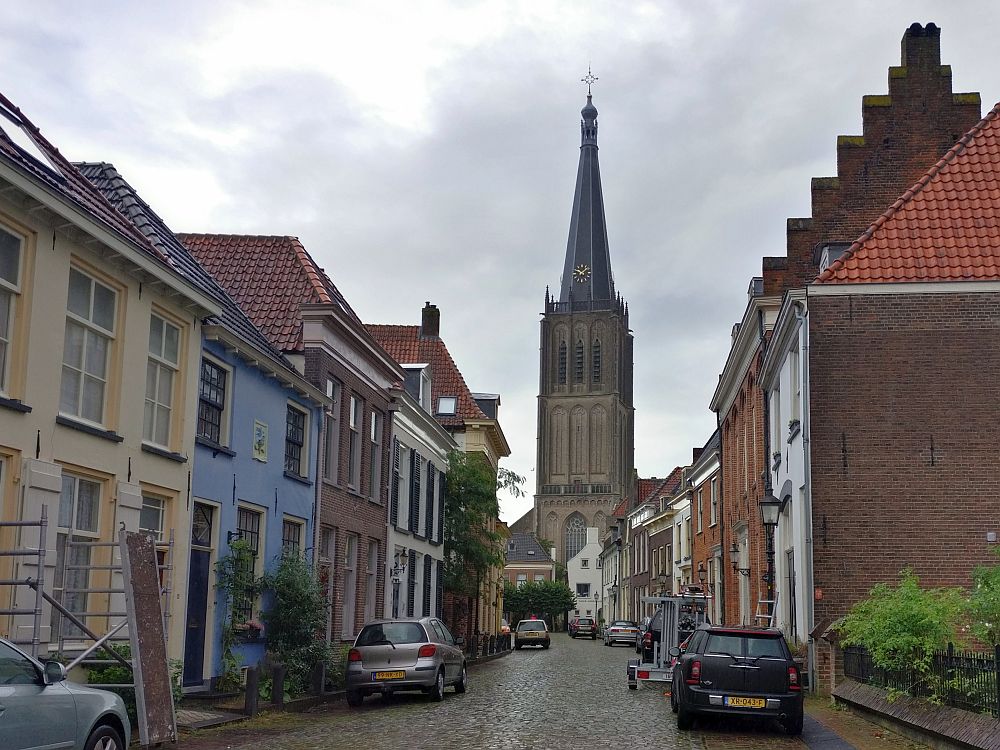
Deventer
In Deventer a walking tour was included in the trip package. A woman from Deventer took us to the bergquartier, which means “mountain quarter,” but, believe me, this is no mountain. When you live in a place that’s as flat as a pancake, any slight rise in the landscape can be called a mountain. Originally this hill was a river dune.
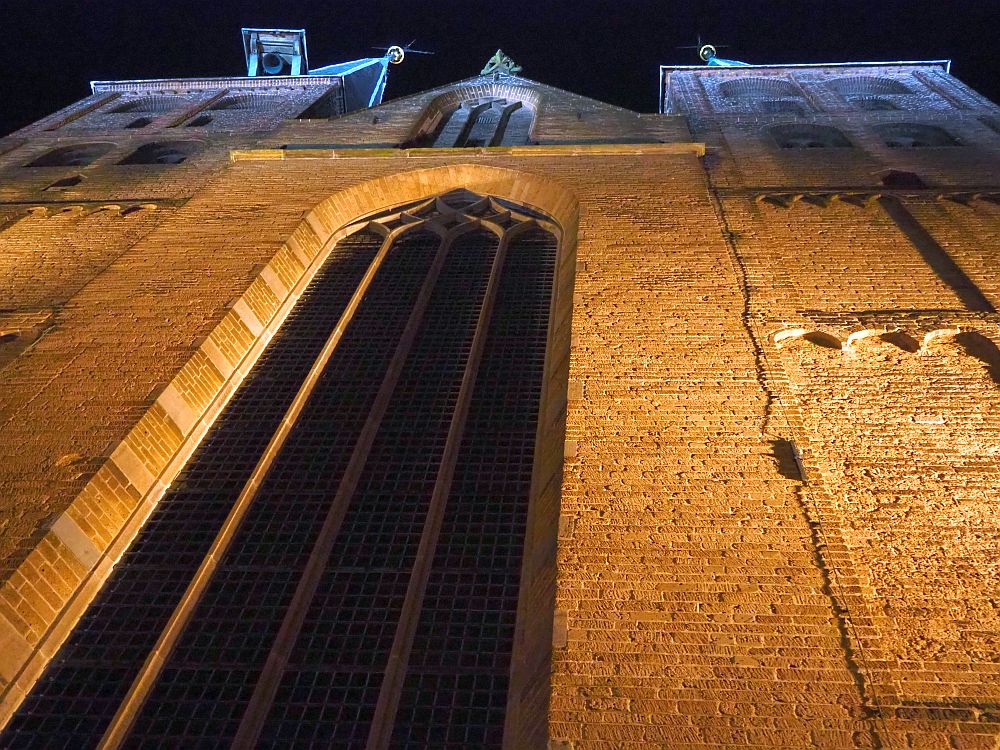
The Bergquartier is, like Doesburg, lined with lovely houses, often with surprisingly large windows. Originally providing modest housing for workers, it fell into real poverty after World War II. With investment from the city in the 1960s, it’s been beautifully restored. Unfortunately the walk was after dinner so it was too dark to get good pictures.
Hattem
Hattem, like Doesburg, is a small Hanseatic town with picturesque houses on cobbled streets. One of the medieval city gates still stands, along with the tiny house next to it that was once home to the village midwife. The chocolatier just a few shopfronts down from the gate has outstanding chocolates, something I discovered as I waited out a downpour breathing in that amazing chocolate smell.

Hattem is also home to a sweet little bakery museum. Everything is labeled in Dutch, but you don’t really need the explanations to see what is being shown. The displays and videos illustrate aspects of old-fashioned bakeries, and, in the café, you can sample the results.
The Veluwe
On Tuesday, the route passes through the Veluwe, a national park with miles of beautiful woods and fields. There are even a few minor hills now and then. When I took the trip, in early October, I had the woods practically to myself much of the time (Shobha stayed on the boat that day.). In the spring, I imagine, it would be even prettier: I saw fields of heather that weren’t blooming, but must be breathtaking when they are.
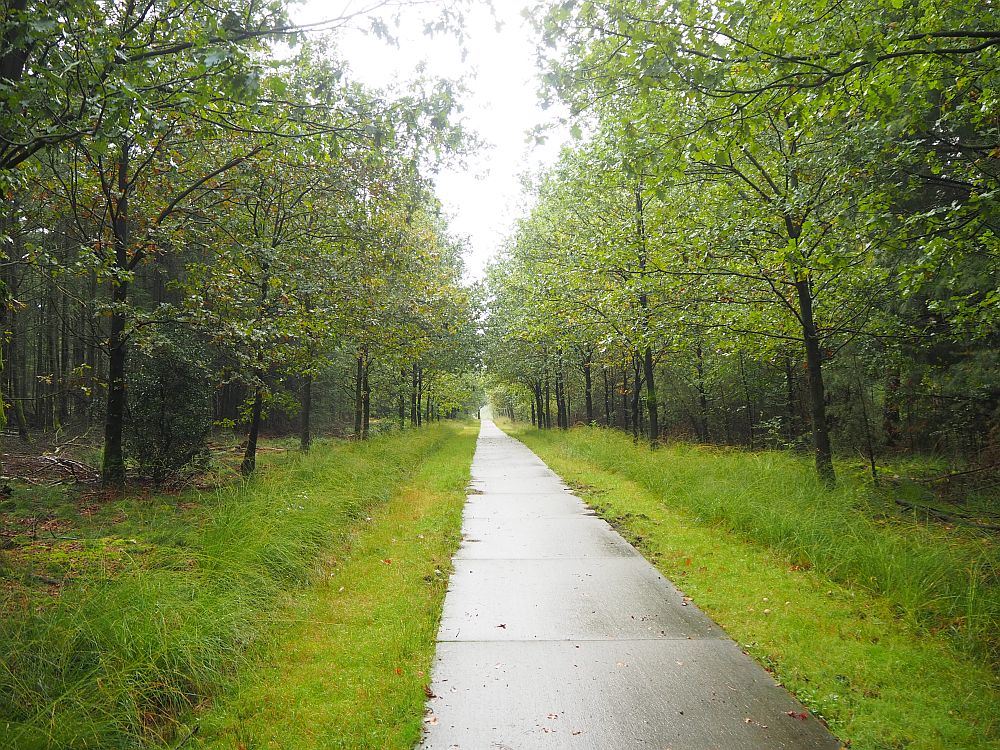
Harderwijk
These days Harderwijk is known primarily because it is home to the Dolphinarium. I felt no need to see that, but I loved the Vischmarkt, a market square with trees down the middle and pretty houses around its edge. At one end is a city gate, the Vischpoort, which doubles as a lighthouse.
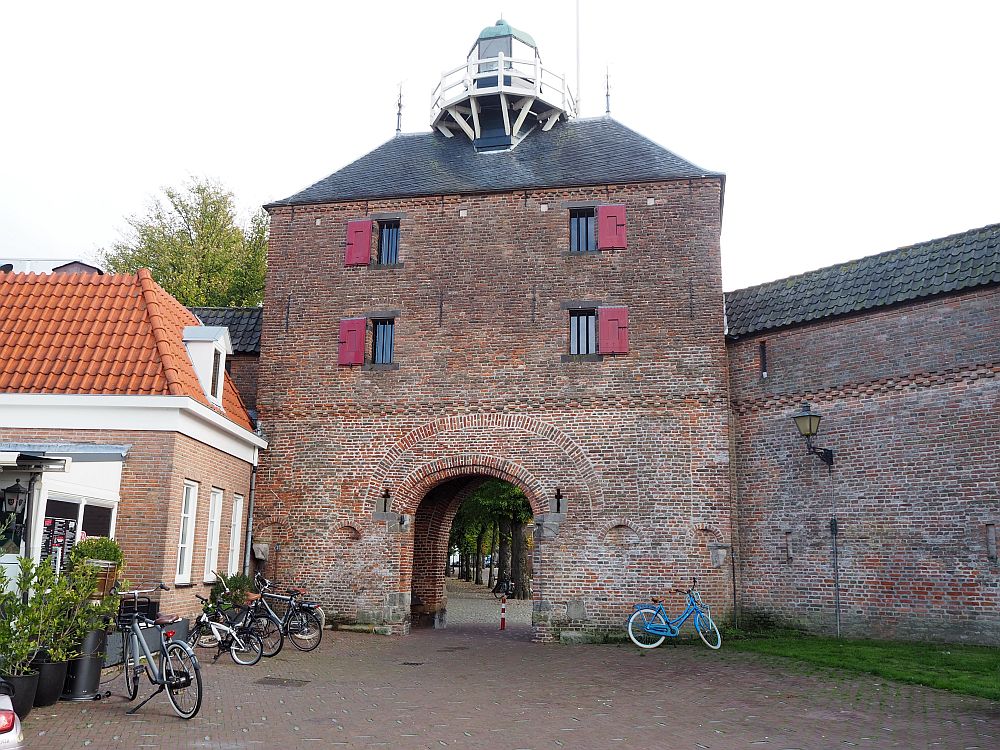
Nearby, Harderwijk has a rebuilt harbor for its collection of vintage botters: traditional wooden fishing boats. A typical village windmill towers above it.
Harderwijk used to be a center for smoking eels before transport, and I hiked over to the other side of the highway, about a 15-minute walk, to visit the Eel Museum (Palingmuseum) at Dries van den Berg Palingrokerij (eel smokehouse) & Fishmongers. It wasn’t worth the hike: more geared toward children, it’s basically just one room with various artifacts of the eel-fishing industry and some interactive displays for kids.
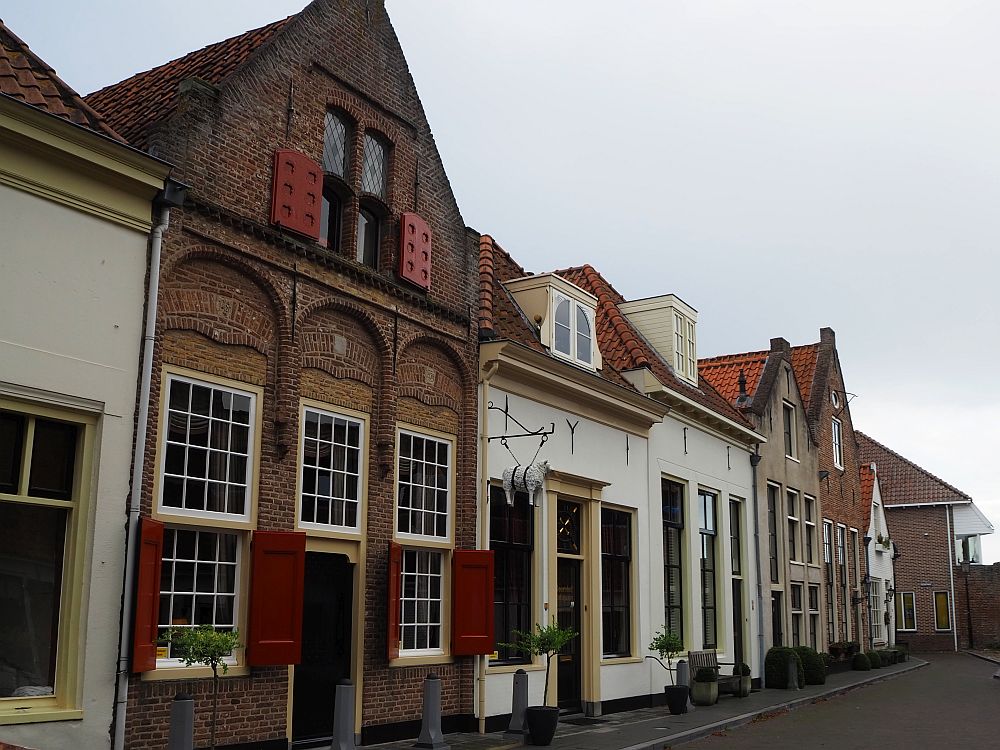
Spakenburg
Spakenburg has, in its little museum harbor, an even more extensive collection of botters than Harderwijk, as well as old fishermen’s houses and a shipyard. We were too late in the season, but in the summer you can take a short cruise in a botter.
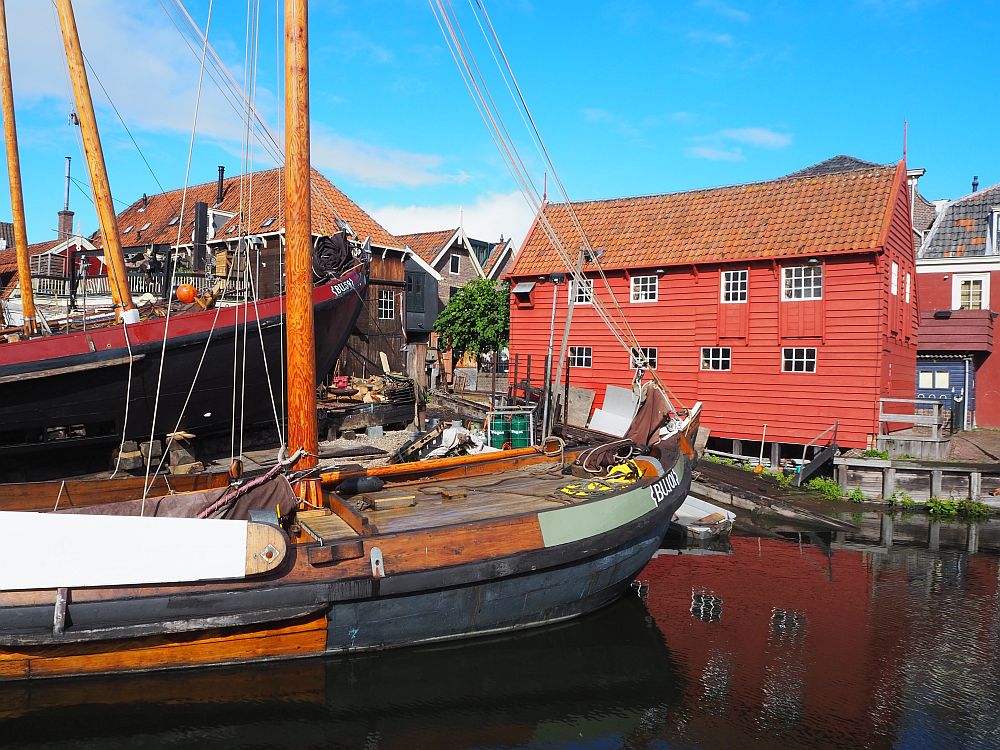
The Museum Spakenburg, in a small group of former fishermen’s houses, gives visitors a glimpse of fishing village life. One building is set up as a school, another as a smokehouse, and others display other aspects of village life, like how the homes were decorated and how people dressed.
Spakenburg is particularly known for its klederdracht – traditional clothing – which some of the older residents still wear. We spotted two on the central market square, complete with small white hat and starched neckpiece. In the museum I learned more about it: that subtle differences in the pattern on that neckpiece indicate whether the wearer is in mourning and how deep in mourning she is.
Unfortunately, the Museum Spakenburg is only labeled in Dutch, but the person at the reception can provide a binder in English giving an overview of each room of the museum.
Naarden
I have no pictures of Naarden because it was raining fairly heavily when we passed through and I didn’t want to risk my camera. What I could see was that Naarden is a fortress city and, much like Bourtange, has star-shaped earthen walls around it as well as a series of moats. Inside is a compact, pretty town, bigger than Bourtange, with a medieval-era church in its center.
Muiderslot
For me this was probably the highlight of the sights. Muiderslot (“Slot” means “castle.”) is an absolutely stereotypical medieval castle, with a moat, a tower in each corner, and a drawbridge.
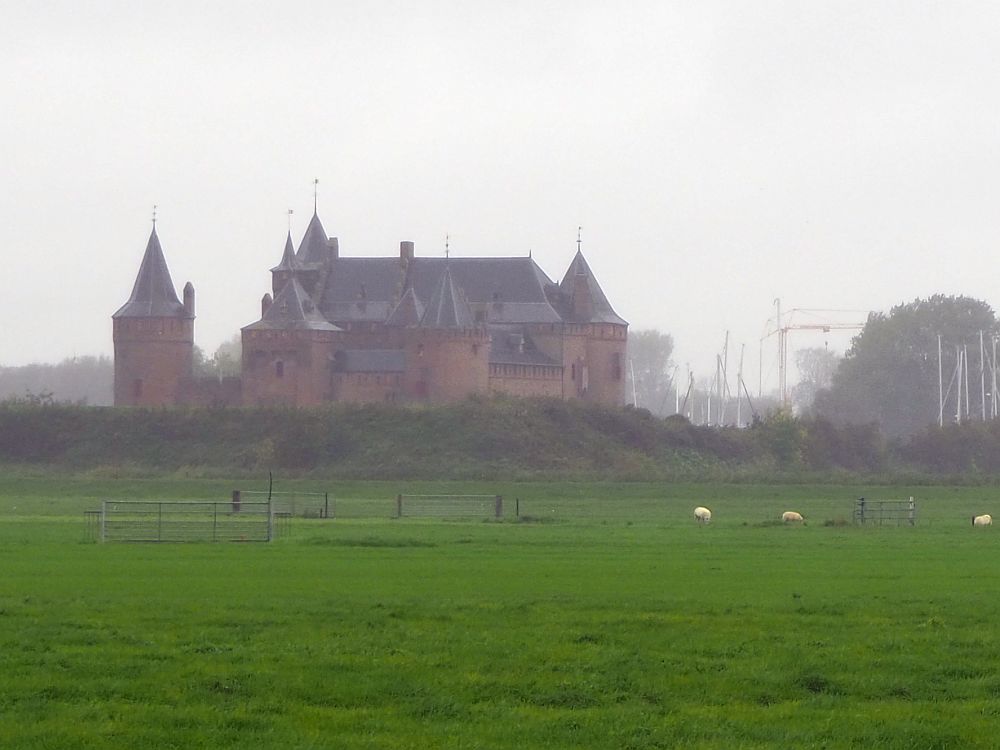
I enjoyed wandering the rooms and towers inside, with the help of an audio guide explaining how the rooms were used. Many are at least partly furnished, and there are some remarkable period paintings on display as well. You can read all about Muiderslot in this separate article.

De Nassau
The ship we traveled on, the 72-meter-long De Nassau, has an interesting history. Built in 1910, it was originally a steam saloon boat carrying up to 1890 passengers on inland trips. It was sunk during the Second World War, but later it was repaired and turned into a tugboat, the steam engine replaced by two diesels. It was converted back to a passenger ship in 1969.
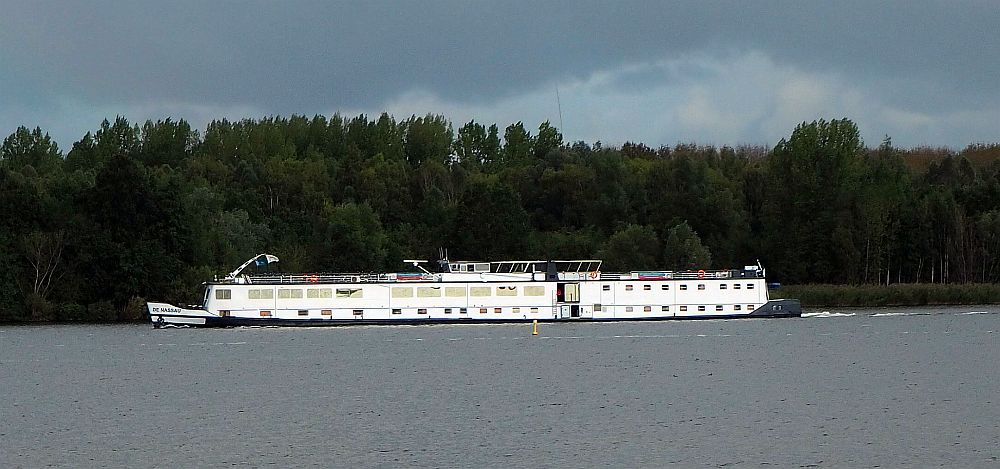
Today it has a capacity of 68 passengers and 12 crew. The main floor has a large common space used for meals, informational sessions and general lounging. The kitchen, bar and reception, as well as some of the cabins, are on this floor as well. One floor down are more cabins. One floor up is the bridge: a room with windows on all sides where the captain or first officer steers the boat. In front of that is a large expanse of deck, filled with bikes when they’re not in use. The deck behind the bridge is partly shaded and has tables and chairs for passengers to use in good weather.
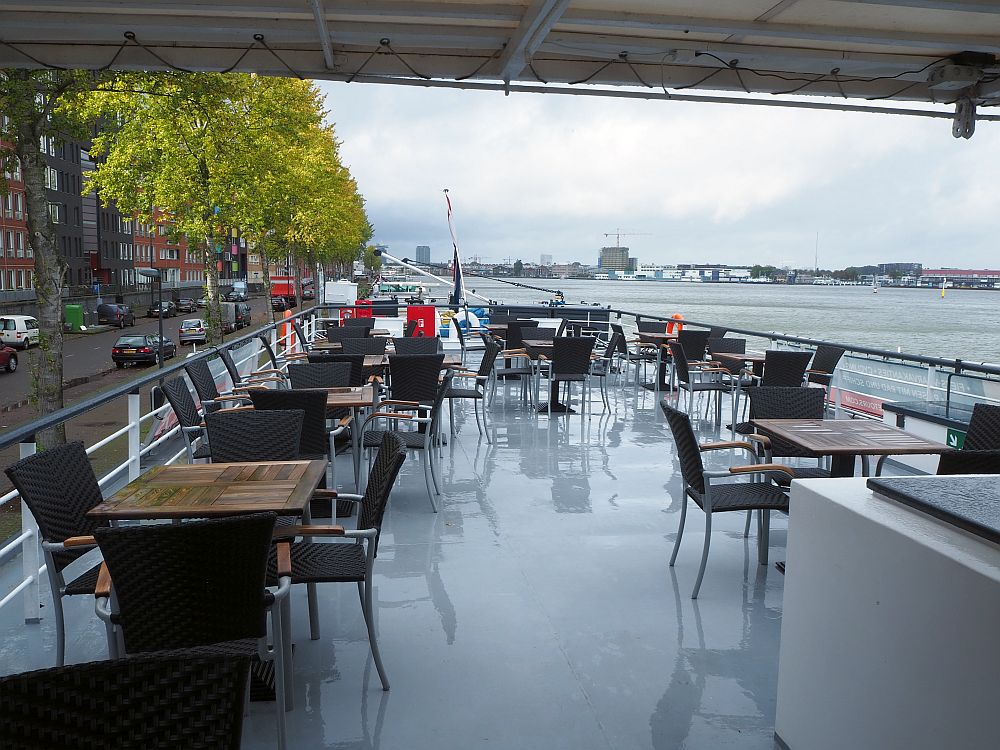
Other than some additional off-limits crew-only spaces, that’s all there is on the De Nassau. You could call it a cruise, I suppose, because it takes passengers on a pleasure trip, but it’s rather bare-bones, I think, to take that name.
How it works
Once we had boarded the ship and settled into our rooms, the first evening was devoted to giving us information about how the tours would be run. Our guide, Sandra, walked us through the ship’s routines and rules so that we’d know what to expect. Each evening after that, she gave a shorter information session about the next day’s bike ride: showing us the route on a screen and pointing out things to see and places to stop along the way. She ran the session twice: once in German and once in English.

Some passengers brought their own bikes, while many rented. We rented e-bikes, due to our general lack of fitness to ride long distances. On arrival we were issued our bikes and given instructions on how to use them, and we were handed a large bike battery to charge in our room. We could also rent a helmet for the week, which we did. In our rooms we also found a pannier for each bike: a sturdy waterproof bag that could be hung on the back of our bikes easily and just as easily removed. I used it to hold my rain things, my lunch and my water bottle.
Some days the boat unmoored and traveled while we were eating breakfast, docking at our designated starting point. Unloading our bikes – we did this ourselves if the ramp from the top deck was usable, otherwise the crew carried them downstairs for us one by one – we took off on our choice of routes.
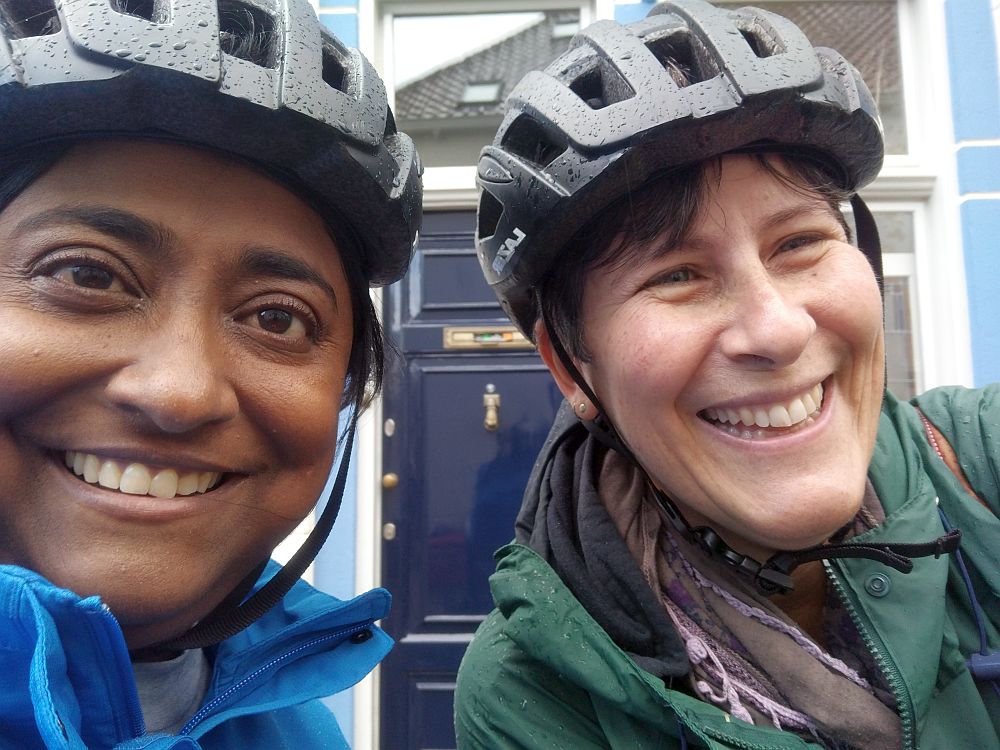
Each day had two routes between the start and end point. Usually the shorter of the two is about 45 kilometers long and the longer is about 55, though it varies. We received a map on the first day that showed each route, but we rarely needed the map. Instead, Sandra explained to us the bicycle route system used in the Netherlands, something I had never been aware of in 21 years living here.
The entire country’s bicycle path network is marked by numbered nodes, called knooppunten. Small signs along the path at junctions point out which way to go to reach which node. For each day’s bike ride, Sandra handed us a sheet of paper with a simple sequence of numbers. All we had to do was watch for the signs and follow them. On the first day, Sandra had given us a clear plastic zippered pouch that could be hung on the handlebars so we could see the paper and keep it dry.
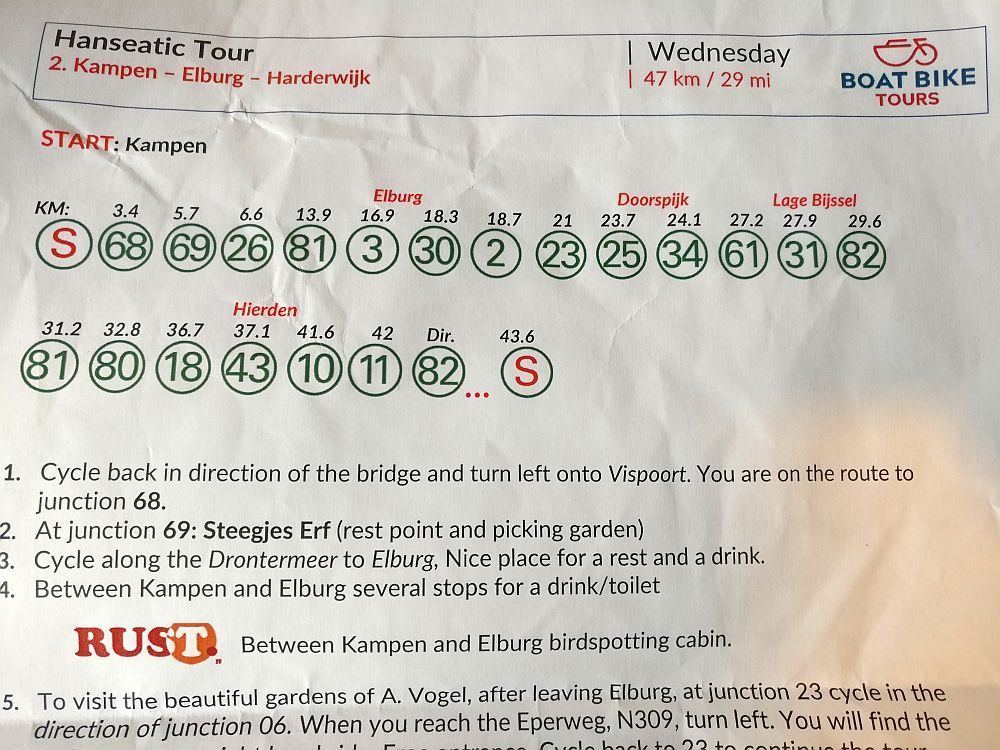
Ride with GPS app
As an alternative, I used an app called Ride with GPS, which I had downloaded ahead of time. Using a code given to passengers by the company, the app can be used for free. I opened the app, chose the route I was planning to take, and left my phone in an outside pocket of my jacket. The voice on the app gave me instructions based on my location: “In a half a kilometer, turn right to 47,” then “In a quarter of a kilometer, turn right to 47,” and lastly, perhaps 20 meters before the turn, “Turn right to 47.”
There were moments when the app didn’t work as well as I would have liked. Sometimes the concept of “Continue straight” wasn’t exactly clear. When a path forks, which fork is straight ahead? A few times it seemed to confuse left and right as well. It wasn’t too much of a problem, though, because the app would emit a certain two-toned signal – a high chord, then a lower chord – that meant I was off the route. Generally I’d get that message within about 100-200 meters.
When I went off the route on purpose – to visit a village, for example – it also would send that tone. I just ignored it and went about my business. However, I would have liked if it had helped me to find my way back to the route with some actual directions. Instead, I realized that it had a slightly different signal – again two chords, but this time a lower and then a higher tone – that was meant as an indication that I was going in the right direction.

In these situations, following the app was a bit frustrating, since I had to just keep going, listening for whether I got the good tone or the bad tone, until I eventually reached the designated route and the voice deigned to speak to me again. It was a bit like that game children play, where they hide something and the other person searches for it: “You’re getting warmer. No, now you’re getting cooler again. Warm again! Oh, now you’re getting really hot!”
I took another Boat Bike Tour in 2021, which you can read about here!
A typical day on a Boat Bike Tour
Breakfast is served from 7:15-8:30 and then anyone who plans to cycle that day has to get ready to leave the ship, usually by 9.30. If you aren’t cycling, you add your name to a list on a whiteboard so your bike doesn’t get offloaded unnecessarily.
While the guests bicycle, the boat moves on as well. Each day it reaches its destination by about 14:00 and the bicyclists can go on board at any time from then on. The ride each day is certainly doable within that time, but you can also choose to board as late as you need.
Dinner is at 18:00, and since it is included in the price, most participants made sure to be on board for that and also for the briefings on the next day’s tour, which were usually held right before dinner.
Most days after dinner we spent chatting with our tablemates over a drink. Some people played board games or cards, and most of us went to bed quite early. A couple of evenings we could take a walking tour after dinner, and once a musician came on board to play some golden oldies. As you can see, this is not a party trip.
On the two days I stayed on board, it was a very quiet, relaxing morning. The boat moves very smoothly through the water, which is very calm on these waterways. The scenery isn’t dramatic, but is pretty and green, and we spotted the occasional windmill, along with lots of water birds. We passed through locks from time to time, and I also enjoyed watching the other vessels traveling the rivers.
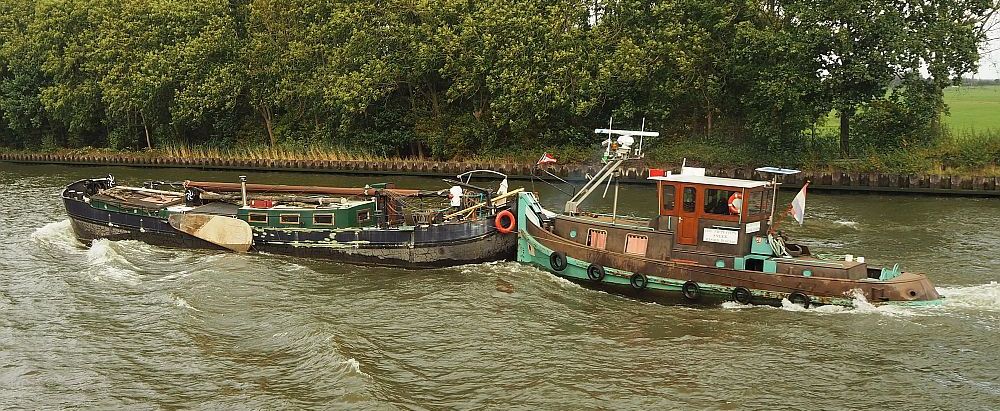
Guided, semi-guided, or individual tours
Boat Bike Tours offers three different levels of tour guiding. This is worth considering when you choose a tour.
Semi-guided
Our trip was called “semi-guided.” What that means is that Sandra, our tour leader, explained the next day’s routes each evening and pointed out things to see on the next day’s ride. As we rode, though, we were more or less on our own. She followed the route each day as well, using an e-bike, but just to be available if anyone needed her.
A couple of times on our tour, she did need to jump in and help people. One was for a flat tire. The other was more serious: a woman who wiped out and broke her arm. In the first case she rode there and helped fix the tire. In the other, she needed to call a GP for a referral to a hospital.
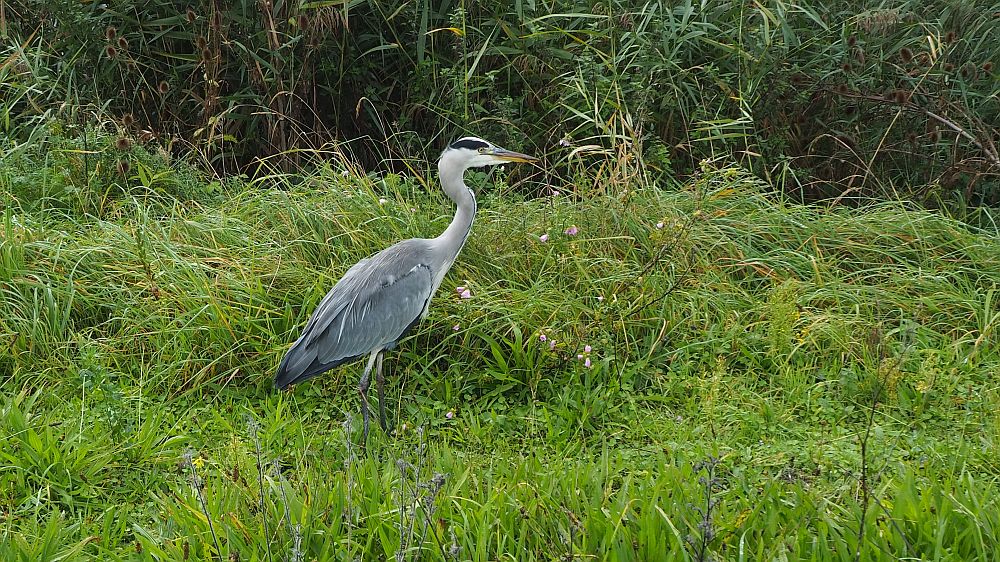
Because of that function as a backup, in case things go wrong, I thought the semi-guided formula worked well. We didn’t need Sandra’s help, but knew she was available, both on and off the ship, if we needed her. And we quite liked being able to stop as often as we wanted and also not to have to wait for anyone.
Guided
The company offers guided tours as well. In that case, the tour leader rides the route with the guests following along. The leader serves as a guide, stopping from time to time for breaks or to point things out. Guests don’t have to keep track of the knooppunten or use the app; they can just follow along. If any guests don’t want to take part, they certainly don’t have to; they can take off on their own.
Sandra observed something interesting about this distinction between guided and semi-guided. On the guided trips, she sees more guests from far-flung English-speaking countries: the US, Canada, Australia, and New Zealand. On the semi-guided tours, the guests are generally more likely to be Europeans, particularly Germans. Her guess was that this was just because Europeans are more comfortable with bike-riding in general.
This was certainly true on our semi-guided trip. The boat was almost full: 66 guests. Of them, 48 were German-speaking, four were Norwegians, and I think that all of the rest were native English speakers.

Unguided
On the other end of the spectrum are unguided, individual tours. On these tours, meant for more experienced, comfortable cyclists, the guests are on their own to get from point A, where they leave the boat, to point B, the boat’s next mooring.
Of the three, the semi-guided is certainly my preference. I don’t like having to conform to a group, so the guided tour would be too much for me. While I could manage a completely unguided tour, I’d have to spend too much energy on navigation, given my lack of any sense of direction. And I liked the idea that if I had a problem, Sandra would be able to get to me fairly quickly.
By the way, Sandra told me that all the travel leaders on the Netherlands routes are Dutch and speak Dutch, English and German fluently.
Want to get some more visuals of the trip? Check out Shobha’s YouTube video!
Bikes for a Holland bike tour
If you live near enough to take your own bike with you on the tour, you are welcome to do so. Quite a few of the Germans on our tour did so. The rest rented theirs.
Everyone I spoke to on the trip commented on the excellent quality of the bikes they rented. The regular bikes were Gazelles, a good solid Dutch brand with upright handlebars. The e-bikes were Velo de Ville brand, and looked very similar to the Gazelles.

My e-bike rode very smoothly, whether I pedaled, which is when the battery gives an extra bit of power to each rotation, or just glided down hills. The one other time I’ve ever tried out an e-bike, this transition wasn’t smooth, causing a jerking motion and a rapid deceleration if I stopped pedaling.
The e-bike has several settings, starting with “eco,” then “tour” and then “sport,” as well as others I didn’t explore. Each gives a bit more help with the pedaling but also uses the battery faster than the one below. I spent almost the entire time on “tour” and with the gear set to 7, but was able to shift to “sport” if the wind against me was strong and/or downshift to 5 or 6. I felt like I got a lot of exercise with pedaling for several hours each day, but never got out of breath or over-tired.
Helmets are not legally required in the Netherlands or Belgium, but if you want one, you can rent one for €10 ($11) for the week. I’d certainly recommend using one if you rent an e-bike, since they can go quite fast. Without too much effort I could travel at 25 kph (about 15.5 mph). I hate to think what would have happened if I fell.
Food and drink on our Boat Bike Tour
This is not a typical luxury cruise, where meals are buffets and food is on offer all day and night. On the contrary, meals are at set times and if you miss one, you’re out of luck.
On the first day, all of us passengers were given a table assignment. We were expected to sit at that table for all breakfasts and dinners. The travel leader, Sandra, had clearly made an effort to match us well, which basically meant Germans with Germans and English speakers with English speakers. In our case, it worked extremely well. Shobha and I sat with a couple from Vancouver and the Canadians I already mentioned (the father, living in France) and his son (living in Canada). They were all very friendly and we laughed a lot over our meals.

Breakfast and lunch
Breakfast on De Nassau starts at 7:15 and goes to 8:30. I found that, to fit in my required dosage of caffeine, I needed to aim for 7:15. Breakfast food is served buffet style, with standard ingredients every day: an assortment of breads and things to go on bread like ham, cheese, and various spreads. A few hot foods are available: scrambled and/or boiled eggs, sausages, beans, etc. Two kinds of juice, yogurt and cereals fill out the menu. And, of course, the all-important coffee or tea. The spread is perfectly adequate but nothing special.
At the same time as consuming breakfast, we were expected to pack lunch for ourselves from the same choices of ingredients. Most of us just made a few sandwiches and grabbed a piece of fruit. No portable drinks are provided, but we each had a water bottle. In any case, we needed to stop to use the toilet from time to time on our rides. We did this at cafés, so that meant buying a drink.
If we decided to stay on the boat for the day, we still had to pack a lunch, and only water is available to drink. I did this twice, on the first day, when it was forecast to rain all day, and after my first two days cycling, to rest my bruised nether regions, if you get my drift.
In the afternoon, as bicyclists arrive back at the boat, they can have a piece of cake and a cup of tea or coffee. Most days on our trip the cake was apple crumble, though sometimes it was other types like cherry or cheesecake.
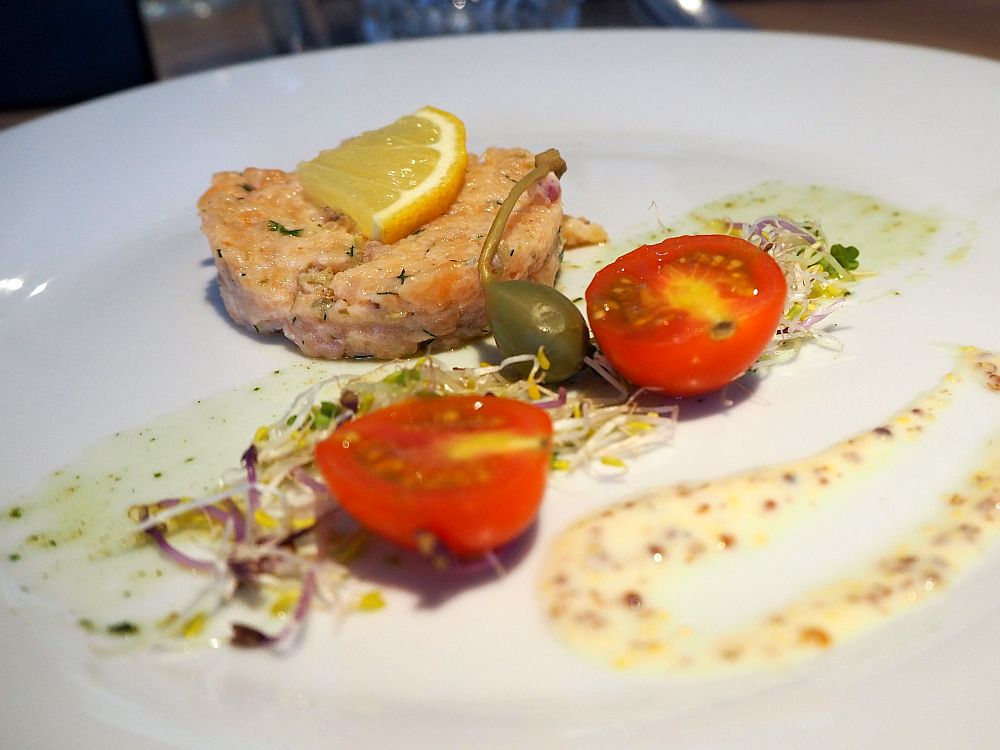
Dinner
Dinners are more formal, with a set menu, and each day we were given a choice of two main courses for the following night. The dinner has three courses, though the salad is sometimes served as an additional course instead of next to the main course. The food was very tasty and hearty and not over-filling. The best, though, were the desserts, which were excellent.
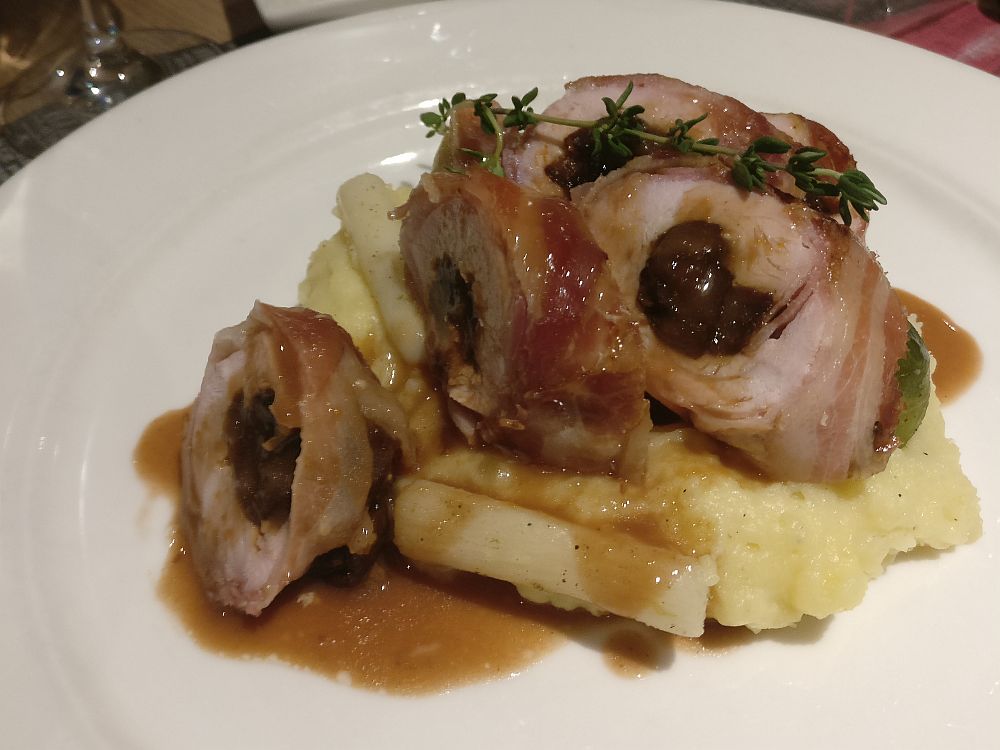
The only thing that was missing, in my view, was tea or coffee after the meal. We could buy it, though, from the bar, and did so most nights. The bar in the middle of the lounge has the usual assortment of drinks for sale, and makes it easy by just running a tab for each room for us to settle at the end of the trip.
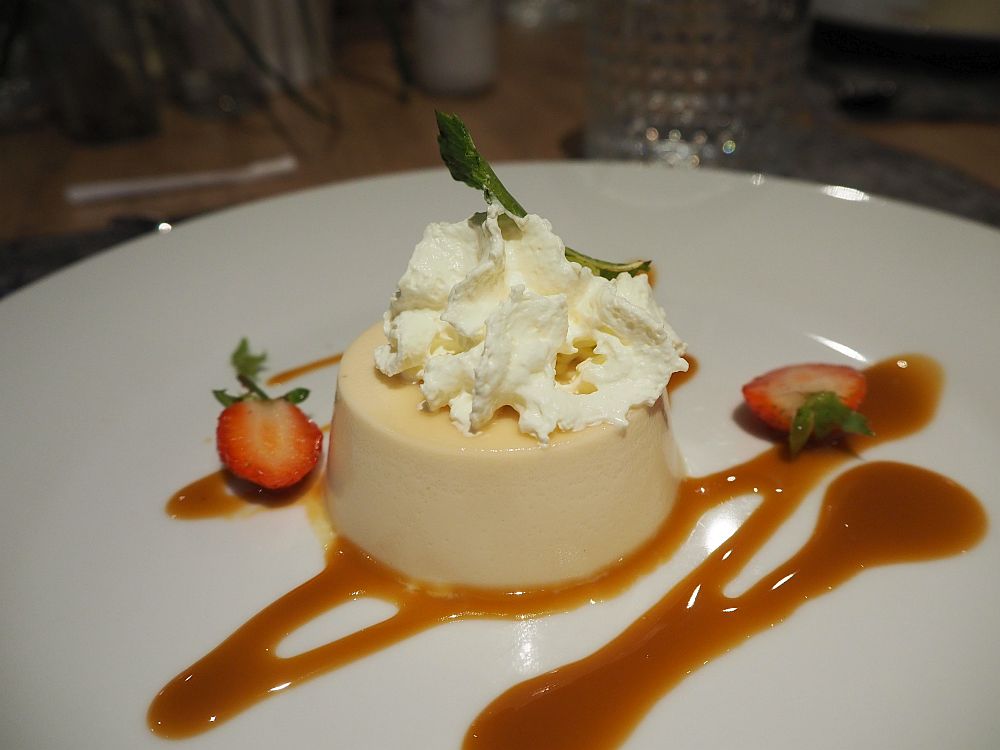
Frankly, given my general addiction to black tea, I would have liked a constant supply of tea to drink, but perhaps that’s just me.
The cabins
The only less-than-enthusiastic part of this review concerns the cabins. I should point out first, though, that Boat Bike Tours does not own the boats; rather, they charter them.
Our cabin, the basic two-person cabin, was very small, especially for two people who are not in a relationship. It measures 9.5-11.5 square meters, according to the company website, and that includes the bathroom.

The cabin has two twin beds, set in an L-configuration along two walls. The only other furniture is a tall wardrobe, and there certainly isn’t enough room for more. Shobha used the wardrobe for her luggage and I stowed mine under the bed.
Above each bed is a single electrical outlet and a reading light. The electrical outlets are not well-located, since they’re right above the sleeper’s head and there is no shelf near enough to them to place a phone or camera while it is charging. A shelf is mounted on the wall above each bed, but so high up that charging cords can’t reach. We barely used them.
Our cabin, like all the cabins, had a window, which I appreciated because we could open it to get cool, fresh air. Nevertheless, our cabin was not a comfortable place to spend any time, mainly because there was no place to sit. The beds are a built-in box frame, with the mattresses sitting inside the frame. If I sat on the bed with my feet dangling, they couldn’t reach the ground. This got uncomfortable very quickly, with the frame digging into the backs of my thighs.
All the cabins have an en-suite bathroom, and ours was extremely small: toilet to the left, small sink straight ahead, and shower to the right. The toilet was standard and the shower was fine, if quite small. I was pleased to see how clean the bathroom was and that there was always hot water.

The sink in the bathroom was quite small, which wouldn’t have been a problem if it hadn’t been for the shelf on the wall just above it. It was situated at a height that made it difficult to spit out toothpaste since I couldn’t place my mouth over the sink without crashing my head into the shelf. When I washed my face, it was impossible not to get the floor wet. It would have made sense to place the shelf to the side of the sink rather than right above it.
It seems to me that these little detail problems could be solved if the cabins were furnished like the cabins on ferries such as the DFDS ferries. There, the beds are bunk beds, and the top one can be folded back to the wall when it’s not being used, while the bottom can be converted to a sofa. A configuration like that, with a shelf on the wall next to each bed along with a more conveniently-placed outlet for each one, would have freed up a bit more space to allow the bathroom, particularly the shower and sink, to be a bit larger.
Tips for your trip
Here are some tips for your Boat Bike Tours trip:
- Bring bicycle shorts or pants. If you’re not used to cycling a lot, you’ll likely still get sore “down there,” but the padding in the shorts does help cushion the blow.
- Bring raingear. We have very changeable weather here in the Netherlands. On our trip we had two days when it rained pretty much all day, and on the rest of the days it rained on and off, with periods of sun. Don’t let this stop you from biking, because this landscape is lovely, even when it’s raining. I used ¾ bike shorts, which was fine. Since I was moving, I didn’t end up feeling cold, even when it was raining. I was happy to have a waterproof rain jacket. I think I would have been happier, though, if I’d thought to bring waterproof shoes and gloves, or perhaps a rain poncho to cover all of me.
- If you’re bringing your own bike, the boat has a basic set of tools you can borrow as needed. These are fine for ordinary bikes, but if your bike is unusual in any way, bring your own tools.
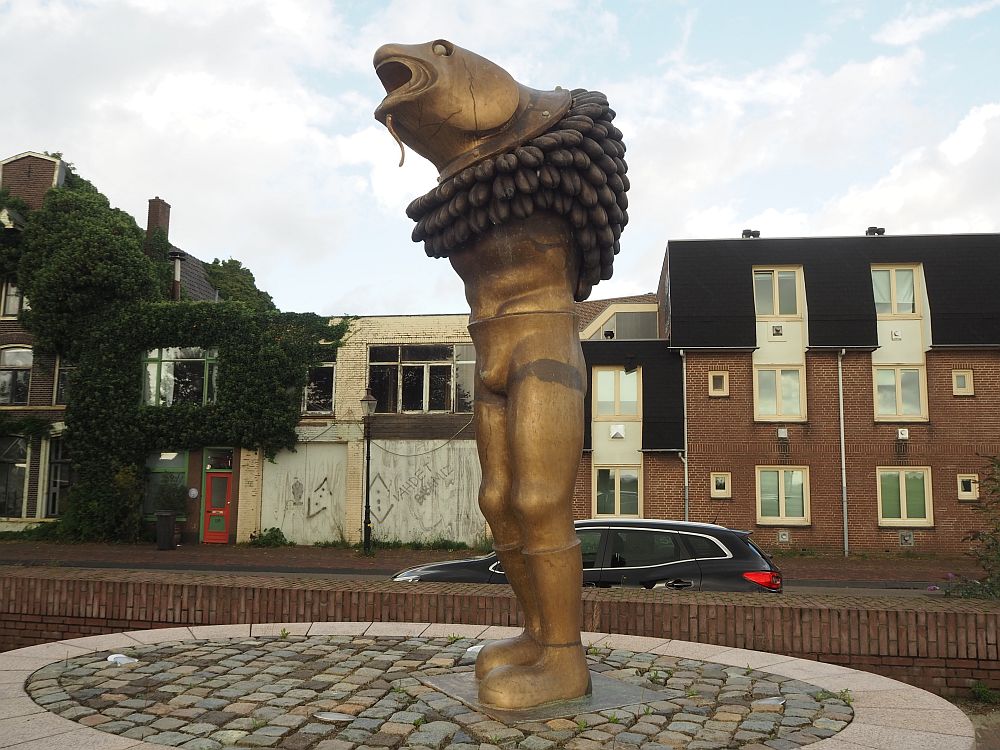
- If you stay on the boat instead of biking, make sure to pack up a lunch and get your dose of caffeine over breakfast. If you miss breakfast, you miss lunch as well, and the only thing on offer once the boat leaves is water: no tea or coffee. You won’t starve, though: generally the boat arrives at its destination by about 14:00, so you can get off then and buy some food.
- Download the Ride with GPS app at home rather than waiting until you’re on board. The WiFi on board is, like at most hotels, not the best.
- Bring a pair of slippers for when you’re on the ship: something you can slip on and off quickly. You’ll appreciate warm feet if it’s been a rainy ride, and going without shoes is against the ship’s rules.
- Bring shampoo and conditioner, as these are not provided. Only soap and shower gel are available.
- If you take a tour in the fall or spring, pack gloves. I missed plain old gloves when I stayed on the boat and wanted to spend some time up on the deck taking pictures. It got cold in the wind. On the last day, when it rained most of the morning, I wished I had some waterproof gloves as I rode.
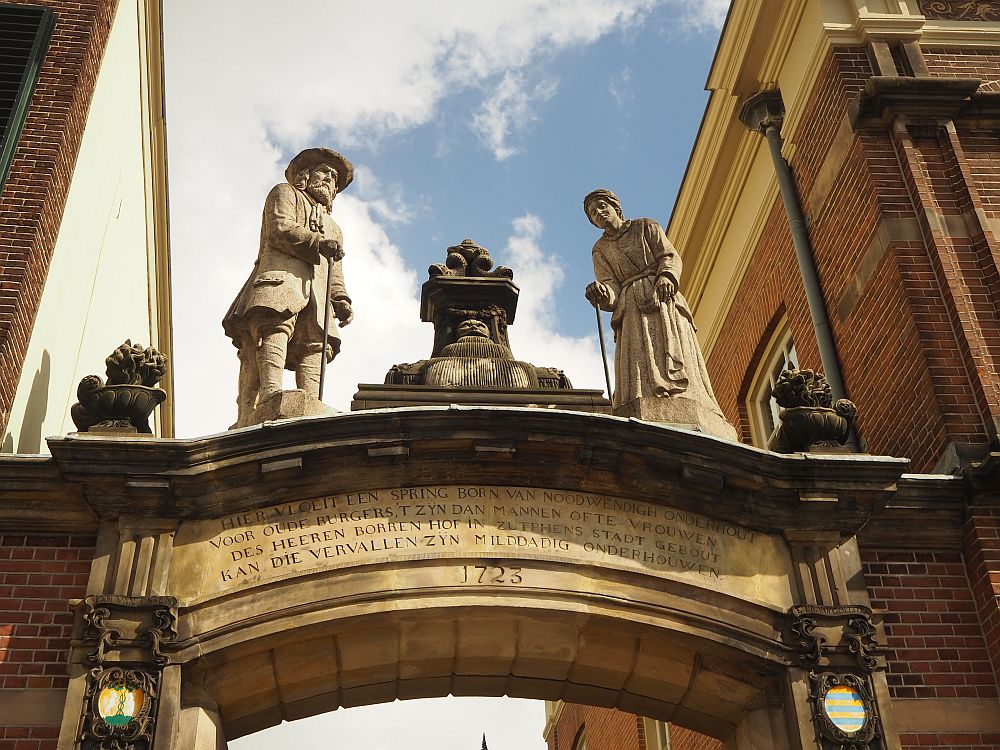
- Make sure you have some cash euros on you. At a minimum you’ll need to pay for ferries across rivers on some of the bike rides: usually a euro per person. But it can also be easier to pay cash for a drink in a café than to figure out which of your cards works. On board, the bar will keep a tab and you can pay up with a credit card at the end of the week.
- Bring an extra charger for your phone. If you use the app, which is much easier than using the printed instructions or the map, it will deplete the battery pretty quickly because it uses GPS to track your location.
- One of our meal companions, Linda, suggests bringing a beanie hat for under your bicycle helmet to keep your head dry when it rains. Another suggestion is to bring a baseball cap or visor for under the helmet to keep the rain and/or sun off your face.
- Bring sunglasses.
- Don’t pack a water bottle; one will be provided.
- There’s no need to bring any dressy clothing or shoes. The whole atmosphere is very informal.
Boat and Bike Tours offerings
In the Netherlands, the company offers several different routes, some of which I heard recommended by a number of different passengers. The Amsterdam to Maastricht route (or back) sounds lovely, and that part of the country has some contours to it, even hills, something we residents of the north miss. The Amsterdam to Bruges (or back) tours sound pretty special too, and the barges used for those are smaller than the one I took.
I particularly like the sound of the seasonal tours built around tulip-viewing. Riding in the tulip-growing areas in the springtime would be breathtaking, I imagine, and you’d be able to escape the Instagram-posing masses much more easily than a bus tour would allow. These tours are offered in 5 or 8-day varieties and in regular or premium.
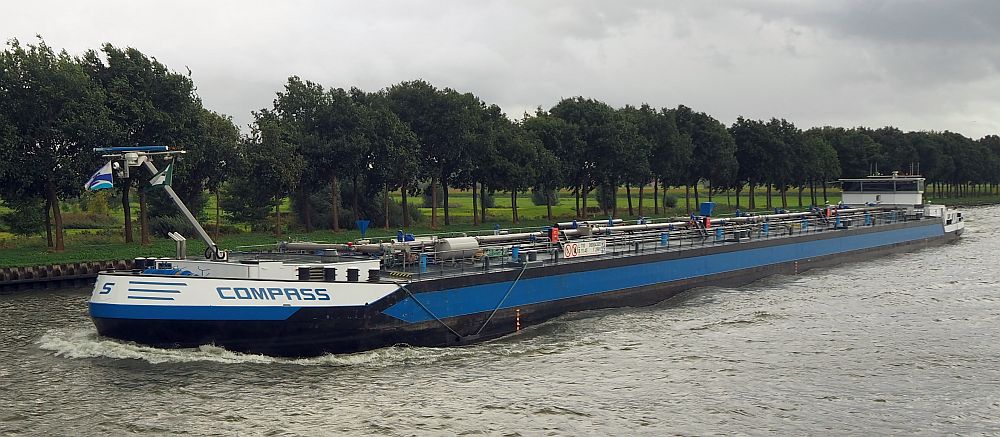
The tour I took was a regular one, not premium. The premium tours have some minor differences: the boats appear to be a bit more upscale with slightly better cabins. They also include some extras here and there, like admissions to certain sights. While only some of the regular boats are smaller, all of the premium ones are, i.e. at most a maximum of 40 passengers.
Rather than river boats, the tours on the Ijsselmeer and the Wadden Sea use sailboats. Both trips would be beautiful and you’d end up seeing a range of pretty harbor towns. In the summer, it might even get warm enough for you to swim.
On the Boat Bike Tours website, many other cycling cruise tours are listed and bookable. These are run by other companies, and some of them sound pretty fantastic. I especially like the sound of the Atlantis, a three-masted barque that is used for a tour in Tuscany. Unfortunately, the bicycling on that tour has a higher difficulty level than any of the tours in the Netherlands, so it’s probably not for me.
Here’s a different non-traditional boat trip I took recently: Hurtigruten review: A breathtaking Norway coastal cruise.
Prices
At the moment, prices range from €599 per person for a 5-day Tulip Tour up to €1279 per person for a couple of the premium 8-day tours. The prices vary within each tour too, depending on the cabin that you choose.
What the price includes varies by tour: some include some walking tours and other activities. Some are guided, some semi-guided and some not guided at all. If you’re booking last-minute you might be able to get a discount.
The published prices do not include bike rental, which, for our tour, cost €80 for a rental bike for the week and €180 for an e-bike. A helmet is €10 for the week.
All meals (including the lunches that you pack yourself) are included, but not drinks. At breakfast, coffee, tea and juice are included, but you’ll have to buy your own drinks from the bar for dinner.
Towels are included, as well as bed linens, maps and use of the pannier bags.
My review
I highly recommend Boat Bike Tours if you like to cycle through lovely landscape in a relaxed, unrushed way. You don’t have to carry your luggage, since the boat moves along the route; the food is excellent; the company is pleasant and relaxed; and you get some unpressured exercise. Along the way, you see the bucolic Dutch landscape and cycle through an assortment of picturesque villages and towns. If you don’t feel like cycling, there’s no shame in staying on board.
The ships Boat Bike Tours uses are not what I would call luxurious, but they’re comfortable and clean and not too big like some of the massive ocean-going cruise liners.
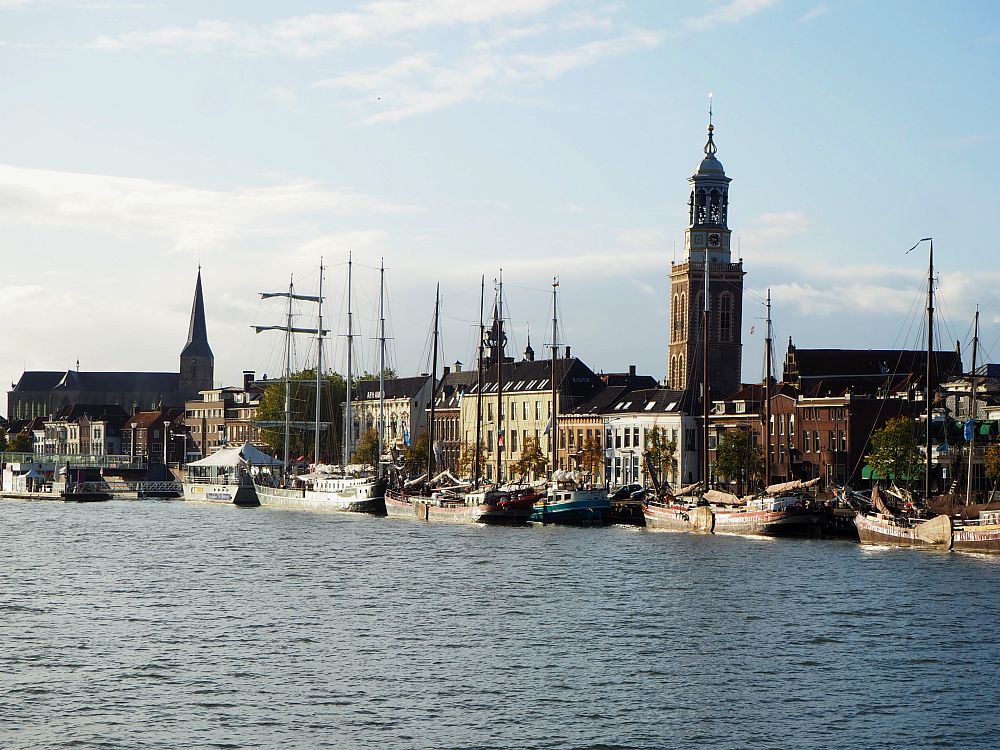
Their staff is outstanding: the travel leader, the boat’s crew, and the hotel and restaurant employees. Everyone seemed willing to pitch in, for example, when the bikes had to be carried downstairs; the captain and first officer helped carry and adjust bikes. All of the staff was responsive to requests and efficient in their work.
It would also be a great choice for an intergenerational holiday. There were several families on board; on our trip, no children, since it wasn’t a school vacation, but grown “children” traveling with their parents. I can imagine if you are looking for a trip to take with three or four generations it would work well: some could ride and some could stay on board and do some walking after the boat docks in the afternoon.
Speaking of children, there are some board games on board, but it’s not really set up for small children to spend the day. It would work best if your children are at an age and disposition that you can take them biking with you. The company can provide bike seats for small children or extensions for your bike for medium children to ride behind you. They can also provide kid-sized bikes for bigger kids. Make sure to let them know ahead of time what you’ll need.
What it comes down to is that these tours are for people who are focused on an active bicycling vacation, not on lounging around and overeating or being entertained, like you’d expect on more traditional river or ocean cruises.

Peter, the English gentleman I mentioned before, was already, by the end of the week, talking about which tour he would take next. When I asked him which tour he’d liked best, he couldn’t really give a clear answer. What he could say was that he kept coming back to this company because it was all so well prepared and organized. I have to say I agree with that; it ran like clockwork.
Have you ever gone on a trip like this one? Would you like to? Add a comment below!
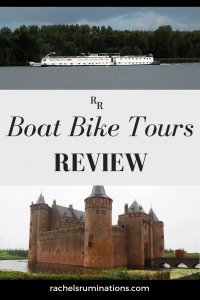
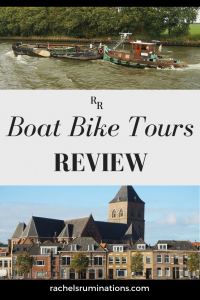


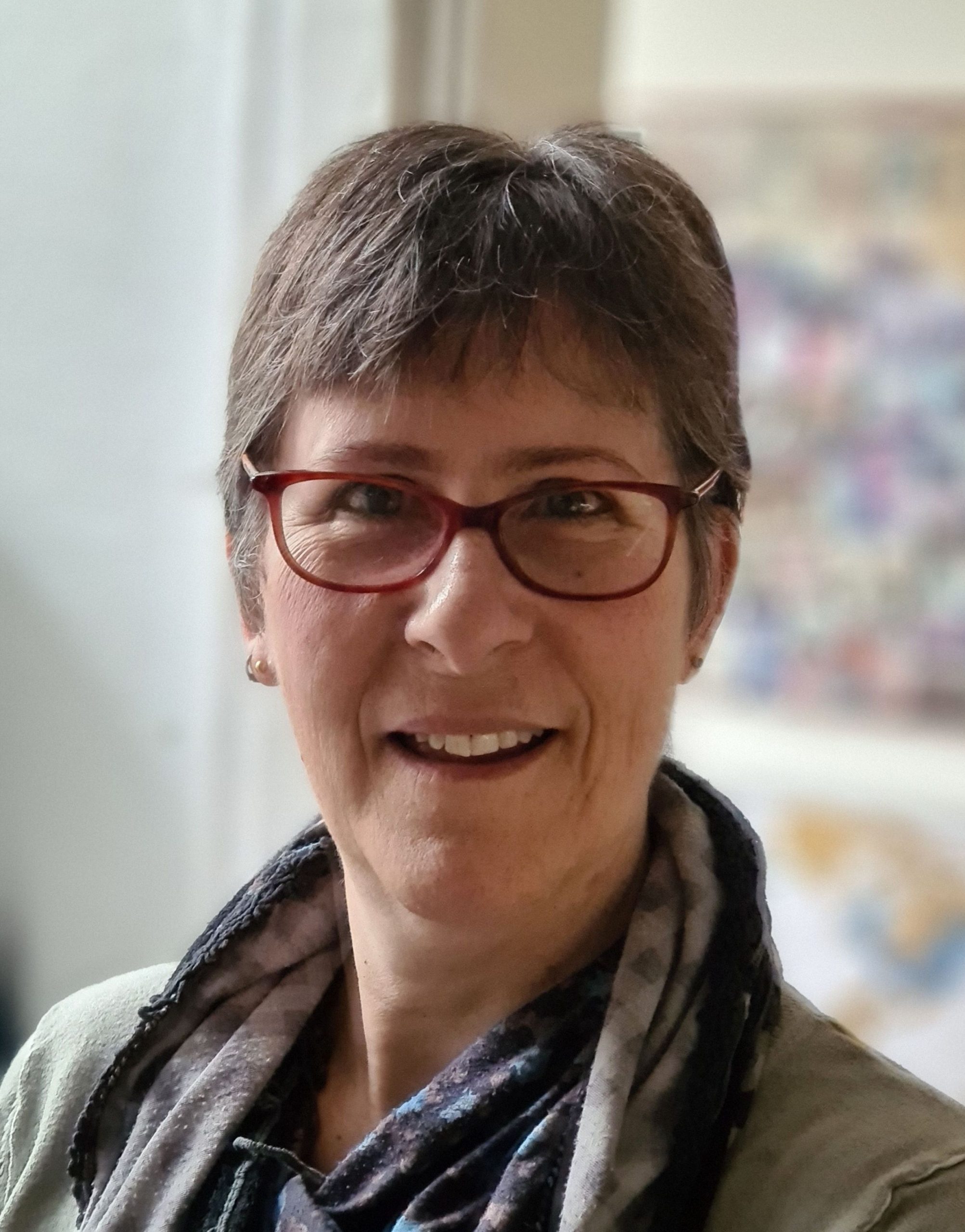
This sounds like a really interesting trip with a combination of traveling by boat for lodging and bicycling. I think I would need an electric bicycle as well. It would be fun to go on the tulip tour in the spring. I’ve always wanted to visit Holland and see the tulips but I’ve never thought of doing a bike and barge tour. Thanks for sharing the idea.
We are completely infatuated with the idea of a boat and bike tour. It looks like you got to see an amazing amount of countryside, all while enjoying a comfortable room for the night.
We have taken seven of these trips, including one of the sail/bike variety. They are all wonderful for different reasons. The advantage of the sail/bike trip is if you travel with a person who doesn’t want to start first thing, no problem as you are in a harbor and will be all day. Picking a favorite would be like picking a favourite child. That being said, the Magnifique barges are very deserving of the luxury tag. They have all the great details that make these trips even more special. But, if the more basic boat is taking the trip you want, do not hesitate. Spending time in your room is not why you take these trips. I recommend the spirit of adventure and the daily exploring. It is fantastic.
Wow! Seven? You must really like them! This is quite an endorsement!
I mean, Hansa is nice and the whole boat and bike tour concept. However, your photos are just top-notch. I enjoyed this post. Well done!
Very nice review, Rachel!
We have taken two Boat Bike Tours, Southern Holland aboard de Amsterdam in August of 2018 and Hansa Highlights in early May, 2019. We brought small folding bikes from the US. One significant benefit was that we each had our favorite saddles, which helped with saddle pain. That said, the rental bikes available looked fine and were in very good condition.
We loved riding through the forests, particularly the Veluwe and the short route on Flevoland, on Thursday. Unfortunately, we had our share of rain and cooler than expected weather, but we had a wonderful time and would love to go again.
We also found the guides to be superb, the ship’s crew to be very helpful and polite, and the food to be great; while breakfast was sufficient, supper was amazing.
People seem to keep going back, so I think my review is pretty consistent with other people’s experiences. Even when we biked in the rain it was enjoyable, which frankly surprised me. I think next time, if there is a next time, I’ll take along one of those really big rain ponchos, the kind that you drape over your handlebars and it keeps all of you dry without being too warm.